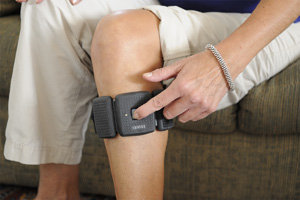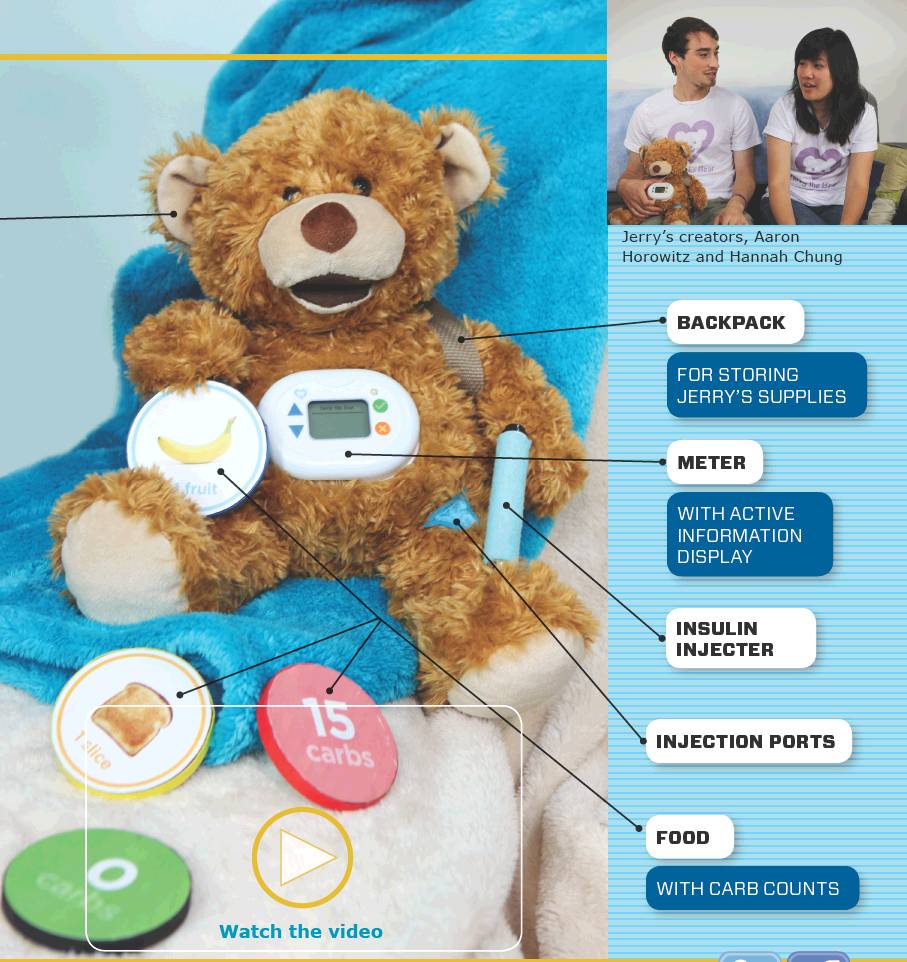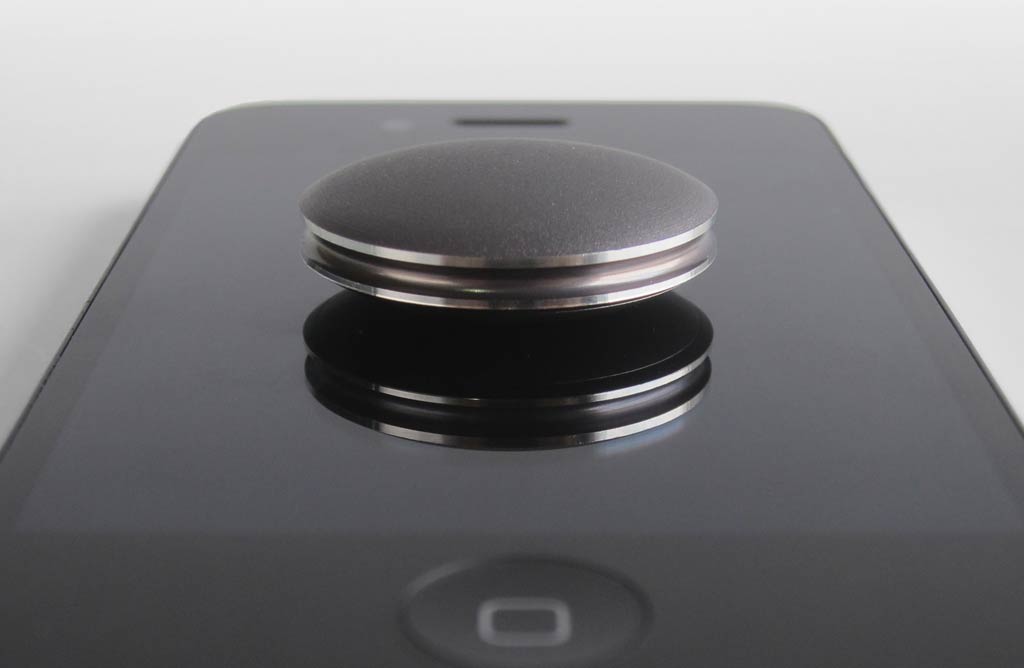Good Vibrations: A New Approach to Treating Neuropathy

 There’s a new product on the market that might offer some relief to millions who suffer from the pain and discomfort of diabetic peripheral neuropathy (DPN). NeuroMetrix has rolled out Sensus, which it says is a simple, non-invasive device that stimulates healthy nerve function and dampens the pain of neuropathy.
There’s a new product on the market that might offer some relief to millions who suffer from the pain and discomfort of diabetic peripheral neuropathy (DPN). NeuroMetrix has rolled out Sensus, which it says is a simple, non-invasive device that stimulates healthy nerve function and dampens the pain of neuropathy.
Right now, I’m taking it for a test drive, or rather, a test walk. While I don’t have diabetes, I do have neuropathy. Due to a back injury, I haven’t felt my feet or, to be more precise, the toes and the front half of each foot, for years.
More than half of those with diabetes will experience DPN in their lifetime, most commonly in their feet and hands, as they age. The longer you’ve had diabetes, the more likely you are to be affected. In people with diabetes, it’s caused by excess blood glucose, which can injure the walls of tiny blood vessels in the nerves, especially in the legs. While keeping your BG in check lowers the risk of developing DPN, a lifetime of diabetes wear and tear makes it hard for many people to avoid.
Peripheral neuropathy is characterized by a number of symptoms, not all of which are present in all sufferers. The most common are numbness or insensitivity in your feet and hands, tingling, burning or prickling sensations, sharp pain or cramps, and loss of balance and coordination. Extreme sensitivity, even to miniscule objects like pebbles, also can make walking barefoot virtually impossible. (I’ve experienced all of these at one time or another in the last 30 years.)
 Don’t bother going online to look for a cure; there isn’t one. In fact, the causes of diabetic peripheral neuropathy are not definitively understood, despite years of research. If you suffer from it, however, it can be incapacitating. And the discomfort is often worse at night, which can lead to poor sleep patterns and opens up another can of worms in diabetes complications.
Don’t bother going online to look for a cure; there isn’t one. In fact, the causes of diabetic peripheral neuropathy are not definitively understood, despite years of research. If you suffer from it, however, it can be incapacitating. And the discomfort is often worse at night, which can lead to poor sleep patterns and opens up another can of worms in diabetes complications.
Regenerating damaged nerves isn’t an option, and over-the-counter solutions like aspirin, ibuprofen, and acetaminophen are usually not effective in mitigating the pain. To treat the condition, doctors often prescribe one of a number of oral medications, including some opiates. Antidepressants can help control or mask the symptoms, and some physicians use anticonvulsant medications such as Lyrica to treat PDN symptoms. Since all oral medications have side effects, not all treatments are tolerated well by all people, and over time it is possible that your body may develop a physical dependence on repeated doses of any drug.
Instead of focusing on internal solutions, the Sensus pain management system relies on external electrical stimulation of nerves and nerve pathways to lessen and control pain caused by DPN in the feet and legs. The device is designed to wrap around your calf, touching the skin under your clothes, and is secured by a Velcro band that adjusts to fit almost any body size. The Sensus “brain” is controlled by a single push button and uses an array of electrodes that snap into place on the skin side of the device to send current into your leg.
The electrode component needs replacing every two weeks, at a monthly cost of about $20, if not covered under insurance. The controller itself is rechargeable, using a mini-USB cable that can be plugged into any wall socket. A growing number of insurers, including Medicare, reimburse for this Class II medical device, which was cleared by the FDA late in 2012 and began shipping to distributors about 6 months ago. It is the only device of its kind cleared for overnight use by patients.

Essentially, Sensus stimulates or “excites” the nerves that carry normal, non-painful sensations to the brain. Stimulation of these nerves changes the levels of certain natural chemicals in the nervous system that decrease pain. Because tolerance for stimulation differs from one person to the next, the Sensus controller “learns” what level of current is right for you by initializing the level of stimulation when you first put on the device. Although 2 of the devices can be worn, one on each leg, a single unit will work, since the effects of the nerve stimulation travel throughout the lower limbs and causes a reaction in the base of the spine similar to that of an epidural anesthetic used to mask pain in women giving birth. Electrical stimulation isn’t continuous; Sensus is designed to work for an hour at a time. It’s easily adjustable and controllable.
Product literature on the NeuroMetrix website says that many people who use Sensus will begin to experience reduced pain after just 15 minutes of use. I found that three hours of stimulation, spaced about an hour apart, produced a noticeable return of sensation to my feet and toes while reducing discomfort. If you have ever had a finger or hand “go to sleep” because the blood flow was temporarily cut off, you’ll understand the difference between a “sleepy” feeling and normal sensations. After 3 more days of use, just an hour in the morning and an hour at night, more sensation was restored. I’m not back to “normal” yet, and may never be, but I can judge improvement based on how my feet feel.
I don’t know how long-lasting these effects will be, but I can vouch for the near-term effects of the treatment based on my initial experience.
Thanks for reading this Insulin Nation article. Want more Type 1 news? Subscribe here.
Have Type 2 diabetes or know someone who does? Try Type 2 Nation, our sister publication.
Thanks for reading this Insulin Nation article. Want more Type 1 news? Subscribe here.
Have Type 2 diabetes or know someone who does? Try Type 2 Nation, our sister publication.







